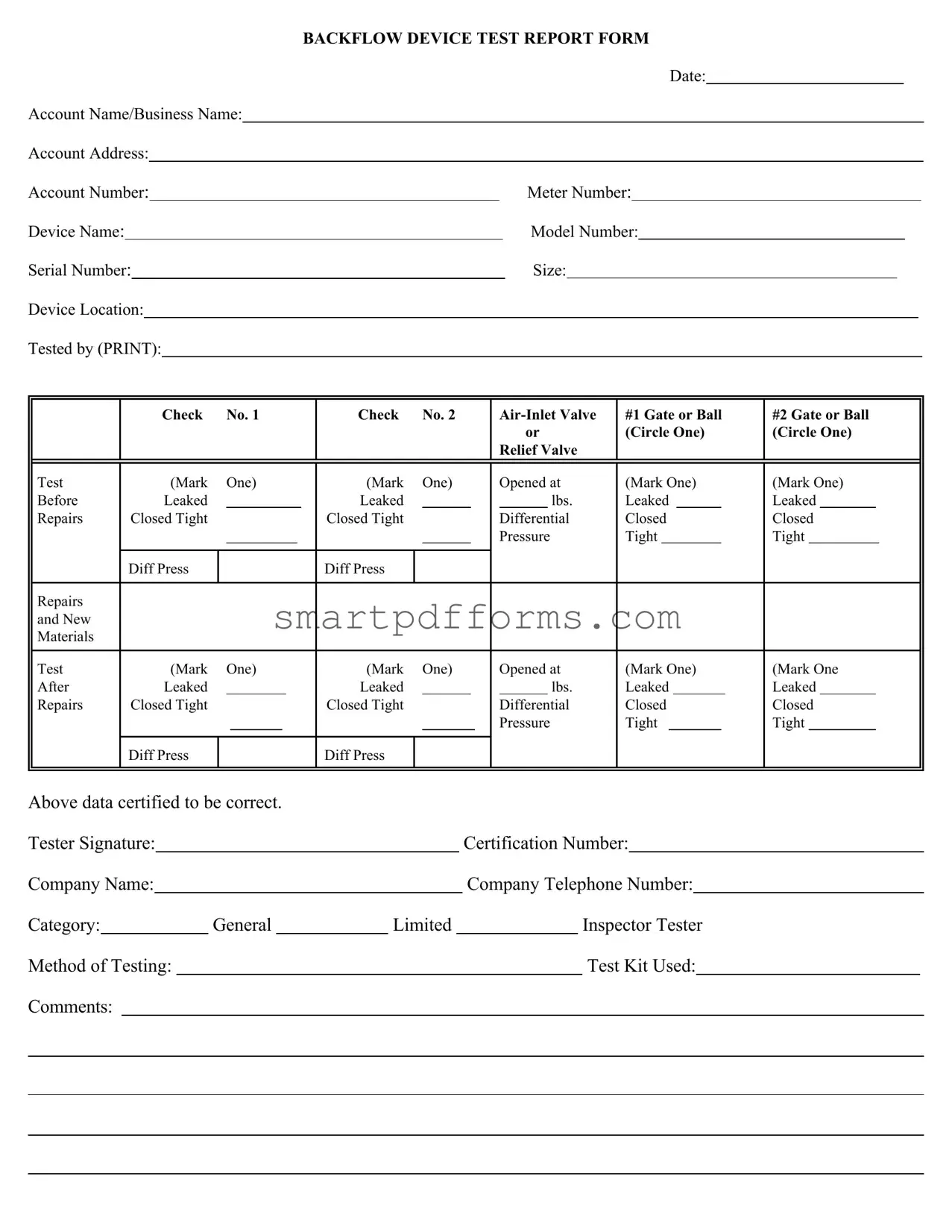Blank Backflow Test Report PDF Template
The Backflow Test Report Form serves as a critical document used to record the testing outcomes of backflow prevention devices, ensuring they function correctly to protect water supplies from contamination or pollution. It meticulously captures details such as the date, account information, device specifics, testing technician details, and the results of various checks performed on the device. For entities responsible for maintaining the purity and safety of water, accurately completing and submitting this form is imperative. To ensure your water systems remain protected and compliant, click the button below to fill out the form.
Make This Document Now

